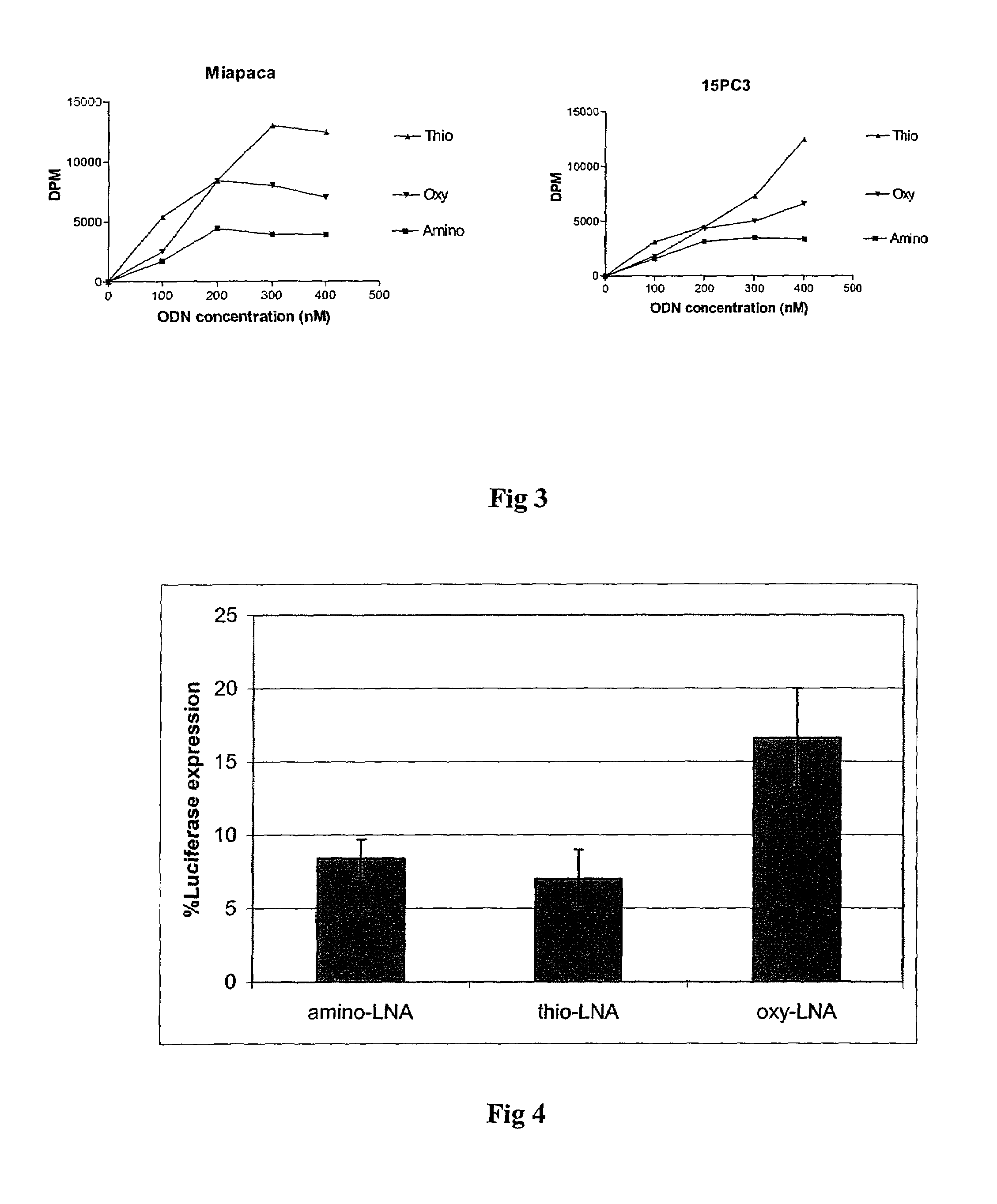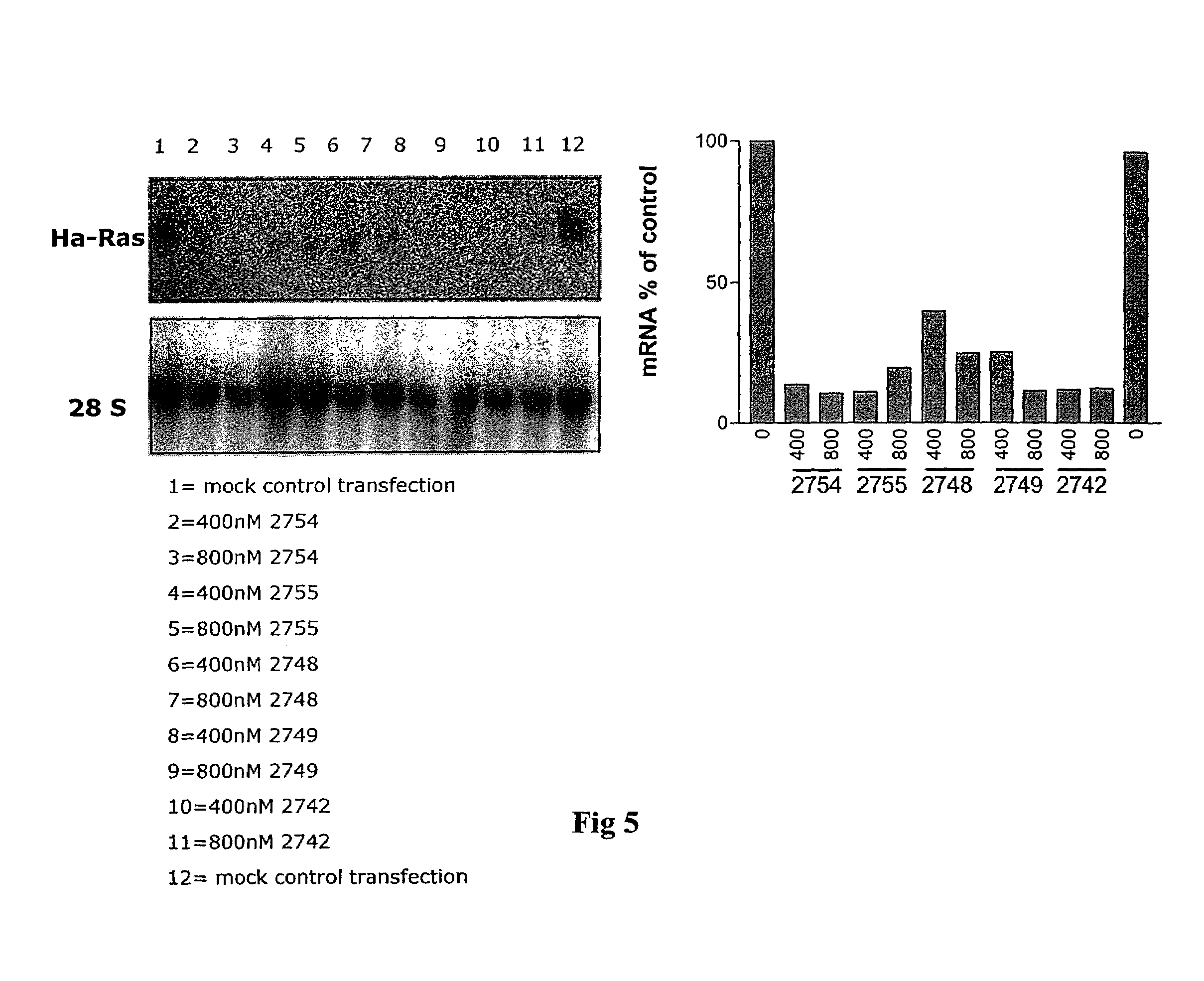Oligonucleotides with alternating segments of locked and non-locked nucleotides
a technology of locked and non-locked nucleotides, applied in the field of pharmaceuticals, can solve the problems of affecting the translation process and consequently gene expression, the cleavage rate of rnase h is much lower, and the binding of these strands to mrna interferes with the translation process and consequently with gene expression, so as to enhance the permeability of lipophilic drugs, facilitate the diffusion, and efficient delivery of nucleic acids
- Summary
- Abstract
- Description
- Claims
- Application Information
AI Technical Summary
Benefits of technology
Problems solved by technology
Method used
Image
Examples
Embodiment Construction
Oligonucleotide Synthesis
[0097]Oligonucleotides were synthesized using the phosphoramidite approach on an Expedite 8900 / MOSS synthesizer (Multiple Olionucleotide Synthesis System) at 1 μM scale. At the end of the synthesis (DMT-on) the oligonucleotides were cleaved from the solid support using aqueous ammonia for 1 h at room temperature, and further deprotected for 4 h at 65° C. The crudes were purified by reverse phase HPLC. After the removal of the DMT-group, the oligonucleotides were characterized by AE-HPLC or RP-HPLC, and the structure further confirmed by ESI.
3′-Exonuclease Stability Study
[0098]Snake venom phosphodiesterase (SVPD, Amersham Pharmacia) assays were performed using 26 μg / mL oligonucleotide, 0.3 μg / mL enzyme at 37° C. in a buffer of 50 mM Tris-HCl, 10 mM MgCl2, pH 8. The enzyme was shown to maintain its activity under these conditions for at least 2 h. Aliquots of the enzymatic digestion were removed at the indicated times, quenched by heat denaturation for 3 min a...
PUM
 Login to View More
Login to View More Abstract
Description
Claims
Application Information
 Login to View More
Login to View More - R&D
- Intellectual Property
- Life Sciences
- Materials
- Tech Scout
- Unparalleled Data Quality
- Higher Quality Content
- 60% Fewer Hallucinations
Browse by: Latest US Patents, China's latest patents, Technical Efficacy Thesaurus, Application Domain, Technology Topic, Popular Technical Reports.
© 2025 PatSnap. All rights reserved.Legal|Privacy policy|Modern Slavery Act Transparency Statement|Sitemap|About US| Contact US: help@patsnap.com



